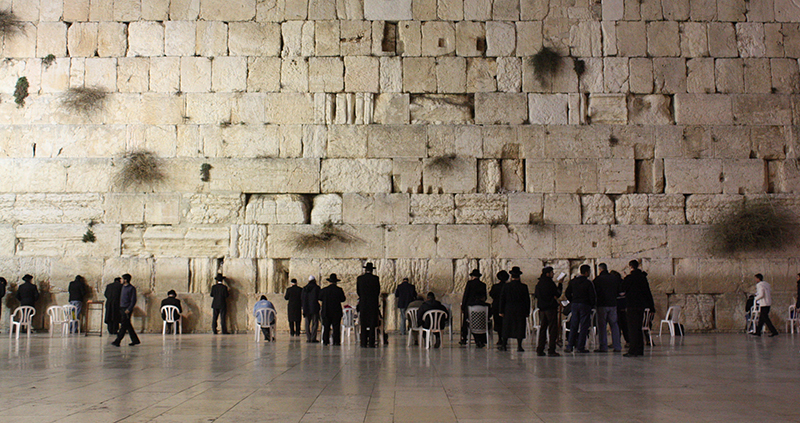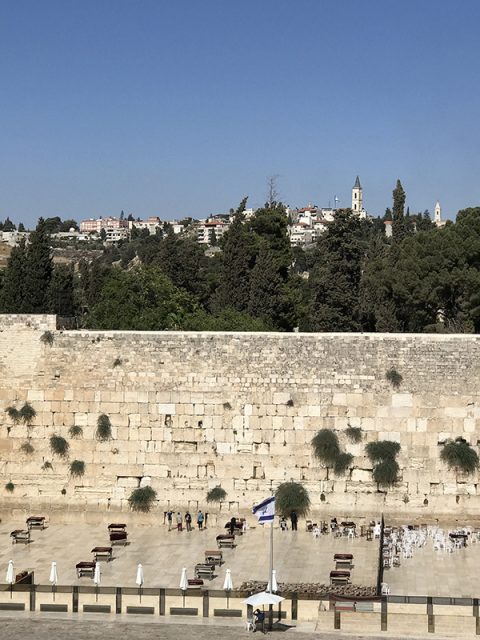JERUSALEM (RNS) — I have been in Israel all month, and it took me four weeks to visit the Kotel (the Western Wall).
This is a first for me; usually, I meander in that direction within my first 36 hours in the Jewish state.
But not this time.
For the last month, I have been holding a grudge against the Wall.
Well, if not against the Wall itself, then certainly against what it has come to represent:
- I have resented the fact that the Kotel has become an ultra-Orthodox shul — in a way that was never intended.
- I have resented the fact that the Kotel has come to symbolize rigid gender separation during worship.
- I have resented the fact that Prime Minister Benjamin Netanyahu reneged on a commitment to expand egalitarian prayer at the Kotel.
- I have resented the fact that the Kotel has become a place not only of passionate, heartfelt prayer, but also of passionate, heartfelt vitriol — coming from ultra-Orthodox haredim who should respect the sanctity of language far more than they have recently demonstrated.
And not only adults; children as well.
Moreover, as part of my emotional distancing from the Kotel, I have remembered that it is actually not a part of the ancient Temple.
Rather, it is merely the retaining wall of the Temple Mount (and let’s not forget how, in recent days, that sacred site has become marred by bloodshed).
I have remembered that the maniacal, egotistical King Herod built that temple structure (undoubtedly, as part of his campaign to “make Jerusalem great again”).
And not only that: True to my Reform roots, I have inherited a historical skepticism about all things temple. It’s our brand.
Reform Jews do not pray for the restoration of the Temple. We have no great affection for the priesthood. We do not find the return of animal sacrifices to be all that appetizing.

Men stand at the Western Wall in Jerusalem’s Old City on Nov. 22, 2009. Photo courtesy of Creative Commons/Kyle Taylor
So, you might say that over the past month, I have become, well, Kotel-phobic.
Until:
- I brought 32 of my congregants to Israel last week.
- We visited the Kotel, a stop that is standard operating procedure for any synagogue group — even Reform groups.
- I walked with a small group to the Kotel at 11 on Shabbat evening.
- I saw a man I’d never experienced as “spiritual” stand before the Kotel in (what seemed to be) awkward silence, and then pour out his heart in prayer.
You know that “prayer for prayer” in the Jewish liturgy?
The one that says “God, open my lips and my mouth shall declare Your praise”?
This time, it wasn’t God who opened my lips.
It was that man who did the job.
When I saw him praying at the Kotel, it cracked my calloused heart wide open.
At that moment, I, too, began to pray:
- For the healing of people who are sick.
- For the continued good health of my aging father.
- For the success and happiness of my children.
And when I was done — yes, I kissed the Wall.
So, here’s the score:
Spiritual/symbolic self: 1.
Rational/suspicious self: 0.
Because, if you want to know what is holiest in someone’s life — or, in a people’s life — there is only one sure way to figure that out.
Look for what makes them angry. And walk backward from there.
The screaming about the Kotel, over who can pray where with whom and with which symbols, only proves how sacred it is, in a way that utterly bypasses the intellect, historical analysis and political posturing.
The screaming about the Temple Mount, over what kinds of security and surveillance devices can be there, and who gets to make those decisions — that only proves how sacred it is.
That is what many people don’t seem to understand. Of course, there are metal detectors at many U.S. synagogues and in most Israeli public places.
What’s the difference?
The people who “own” those places put them there.
Anthropology rule No. 1: Do not mess with someone else’s holy place.
Back to the Kotel.
Tuesday (Aug. 1) is Tisha B’Av, the fast day that commemorates the destruction of the First and Second Temples. You might ask: Tisha B’Av? OK, we did that in Jewish summer camp. We did programs that scared some kids halfway to death.
But, really — mourning the Temple (see Kotel-phobia, above)?
Especially in a time when Jerusalem has been rebuilt?
Yes.
Here’s why I mourn: The sages said Jerusalem was destroyed as a punishment for the fact that Jews were divided, and that they allowed those divisions to become excuses for gratuitous hatred.
Think that’s irrelevant?
This year: Tisha B’Av.
More than ever.
(Rabbi Jeffrey K. Salkin is the spiritual leader of Temple Solel in Hollywood, Fla. He writes the “Martini Judaism” column for RNS. The views expressed in this opinion piece do not necessarily reflect those of Religion News Service.)






